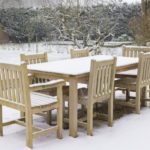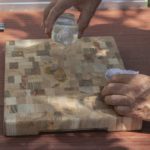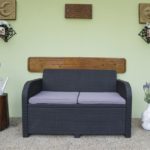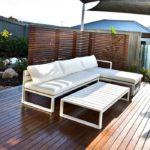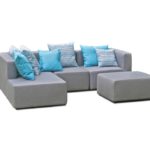Depending on where you live, maybe winter stops by to say hello and then politely goes away. Other areas have snow all year, but that doesn’t mean you don’t want an outdoor space you can use at least on the sunny days! Natural elements such as rain, snow, ice, and more can affect our beautiful outdoor patio sets negatively if you don’t take the right precautions.
During winter, outdoor furniture is exposed to extreme temperatures, moisture, UV rays, and general wear and tear. Make sure to seal your wooden furniture and dry it off after rain and snowstorms. Bring cushions, umbrellas, and upholstery inside during winter. Consider using furniture covers.
As expected, it’s best to bring in furniture during harsh weather. However, some furniture materials may require less maintenance and care. So, what do you need to know about outdoor furniture in the Winter? Read on to find out!
Why You Might Want to Store Your Outdoor Furniture During Winter
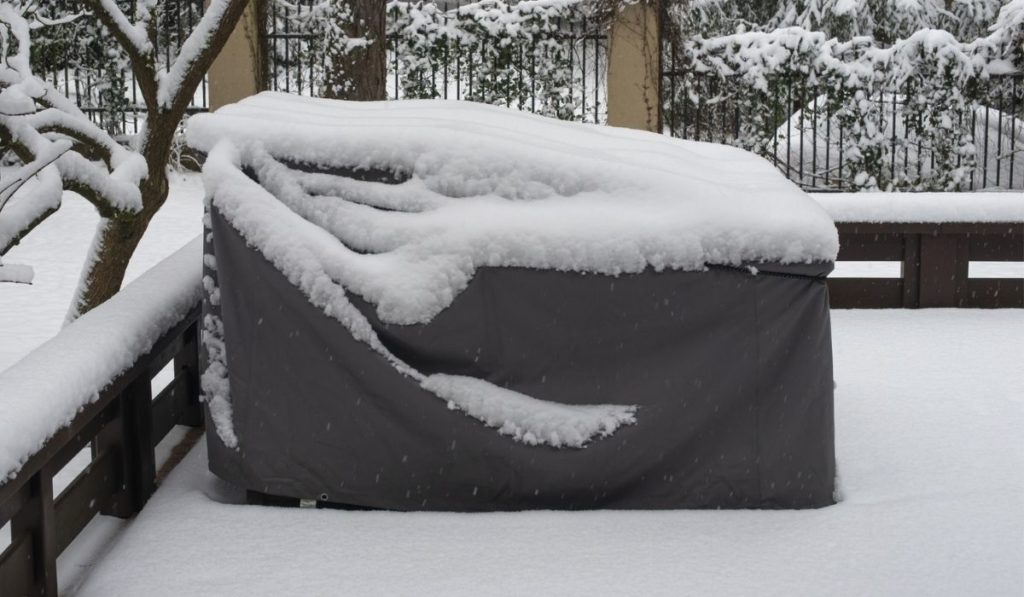
When you purchased your outdoor furniture last summer, you may not have considered maintenance or wear and tear. We can’t blame you! You were enjoying the sun, soaking up the rays. Now, winter is upon us, and so are the harsh conditions from the natural elements.
Different outdoor furniture materials react differently to the natural elements. Some materials can withstand extreme temperatures and rough storms. However, winter is an especially difficult time for most patio furniture sets.
Outdoor covers like this example (on Amazon), as well as heavy duty tarps, can help cover furniture and act as your first line of defense, but your ultimate solution will be different based on your needs, the weather in your area, as well as the material (wood, metal, stone) of your outdoor furniture.
Moisture
One of the biggest concerns regarding patio furniture is moisture damage. The snow, ice, rain, and mud from the winter months can all cause moisture damage. Wooden furniture can suffer cracks, mold, mildew, and rot when exposed to too much moisture.
Although unlikely, aluminum and iron furniture sets can even rust and crack from moisture damage. Plastic patio sets are at risk of breaking, cracking, and warping.
Sun Damage
Although we typically associate the winter months with overcast weather, your outdoor furniture is still susceptible to sun damage. The harsh UV rays from the sun can cause outdoor furniture to fade and lose its color over time. Fabric can be especially vulnerable to sun damage and should be stored properly.
Wear & Tear
The natural elements can cause damage to your outdoor furniture through wind, storms, and harsh conditions. Lightweight furniture like plastic can be blown around during tough storms, resulting in fractured furniture. If you live in an area with harsh winter storms, you should store your furniture inside if possible.
Can You Leave Outdoor Furniture Outside In The Winter?
In general, leaving furniture outside throughout the entire winter is not recommended. Although outdoor patio sets are designed to withstand the natural elements and harsh conditions, proper storage extends their lifespan for the long run.
Luckily, there are some components of outdoor furniture you don’t necessarily have to store inside.
How to Store Outdoor Furniture
Each type of outdoor furniture material has its own set of advantages, disadvantages, and best-use cases. Some materials and components can be left out in freezing temperatures and harsh conditions. Other materials will need to be brought inside, covered, or sealed with a weather-resistant material.
Properly Store and Seal Wood Furniture to Avoid Wood Rot
Outdoor wooden furniture sets typically need to be stored throughout the winter or properly sealed with a weather-resistant coating. This is because the moisture from rain, ice, and snow can cause mildew, rot, mold, and warping.
You can find various wood sealants (on Amazon) online at affordable prices. Danish oil and teak oil are great options for wooden furniture sets. Different oils and varnishes will create different results, so it’s best to read all instructions and guidelines before using them.
Wrought Iron Can Rust
Wrought iron furniture has the advantage of longevity and durability. The downside? It can rust when exposed to too much moisture.
Some wrought iron patio sets come with weather-resistant coatings, but this is only one line of defense.
Snow, ice, and even bird droppings can cause wrought iron furniture to rust and degrade over time. It’s best to bring wrought iron furniture inside or cover it with a tarp.
Stone Furniture Can Freeze and Crack
Stone furniture can last a lifetime when properly maintained. Unfortunately, the porous material allows water to seep into the nooks and crannies. This can cause moisture damage, causing your stone furniture to freeze and crack.
You’ll need to seal your natural stone furniture before the winter months to ensure its longevity. Weather-resistant sealants like the Sealer for All-Natural Stone (on Amazon) protect your furniture from stains, moisture damage, cracks, and more.
Aluminum and HDPE Can Stay Outside
High-density polyethylene (HDPE) furniture can be left out during the winter months. HDPE furniture sets are made of durable plastics with resistance to natural elements.
Aluminum furniture can be left out during the colder months as long as it’s not exposed to rain and moisture. Aluminum is nearly rust-proof, but moisture and cold temperatures can cause the metal to crack and warp.
Keep Your Furniture Dry
You need to keep your outdoor furniture dry during the Winter. Moisture is the number one enemy to materials like wood, stone, and some metals. Ensure your furniture is completely dry before storing it inside. Dry your furniture off before covering it with a tarp or other weather-resistant fabric.
If you’re leaving your furniture uncovered, consider drying it off with a towel after rainy and snowy nights.
Umbrellas, Upholstery, and Cushions Stay Inside
Many cushions, umbrellas, and upholstery sets are made with weather-resistant fabric and materials. However, storing these items inside reduces the chance of sun damage, warpage, and other wear and tear.
Individual Furniture Covers Can Be A Life Saver
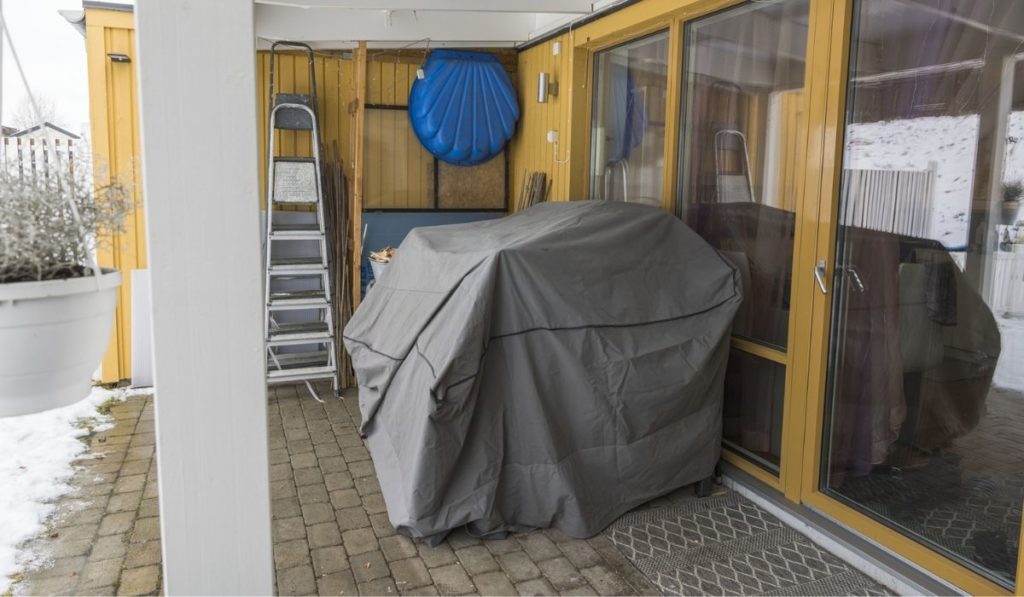
Using individual coverings is a fine choice for protecting your furniture from moisture damage. By covering your furniture, you can prevent moisture, debris, and animals from getting into it. You can find individual coverings (on Amazon) online at affordable prices.
Use Heavy-Duty Tarps For Large Backyards
Using heavy-duty tarps is another way you can protect your furniture from the elements. Tarps serve the same purpose as individual coverings, sealing out moisture, debris, and other damages.
Tarps are excellent solutions for those with larger backyards or patio sets. You can find heavy-duty, water-resistant tarps (on Amazon) online for affordable prices.
When In Doubt, Bring It Inside
The simplest way to protect your outdoor furniture during the winter is by bringing it inside. That way, you can completely remove it from the moisture and harsh conditions of winter.
You can store your furniture in your shed, garage, house, or even a storage unit. Try stacking your furniture pieces on top of each other to save space. If your furniture is fairly robust, you may only need to bring it in during the roughest nights.
Conclusion
Colder months during the wintertime can damage outdoor furniture causing mold, rot, cracks, warpage, and more. Each material will react differently to the elements.
Some materials like aluminum can withstand tougher conditions. Other materials like wood need to be properly stored or sealed during winter.
Properly caring for, storing, and sealing your outdoor furniture will increase its longevity. By storing your furniture out of the natural elements, you save it from moisture damage and other wear and tear.
Using individual coverings, tarps, and sealants can act as another layer of defense. Whether you’re using a sealant, tarp, or storing your furniture inside, doing so is crucial for maintaining your furniture’s lifespan.



